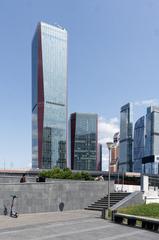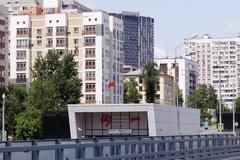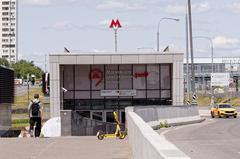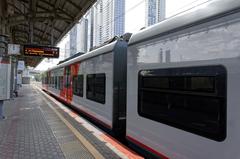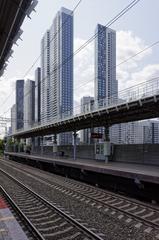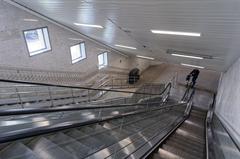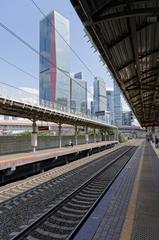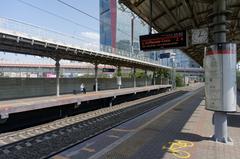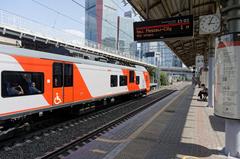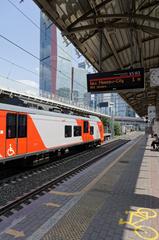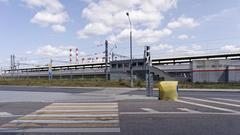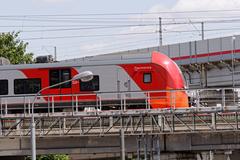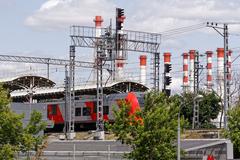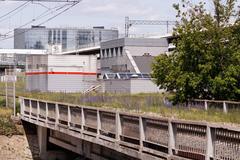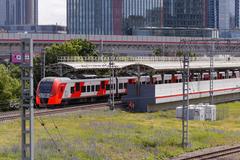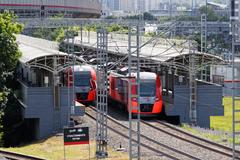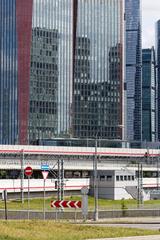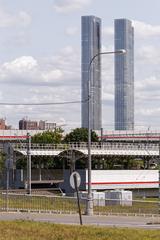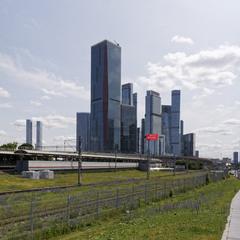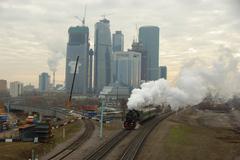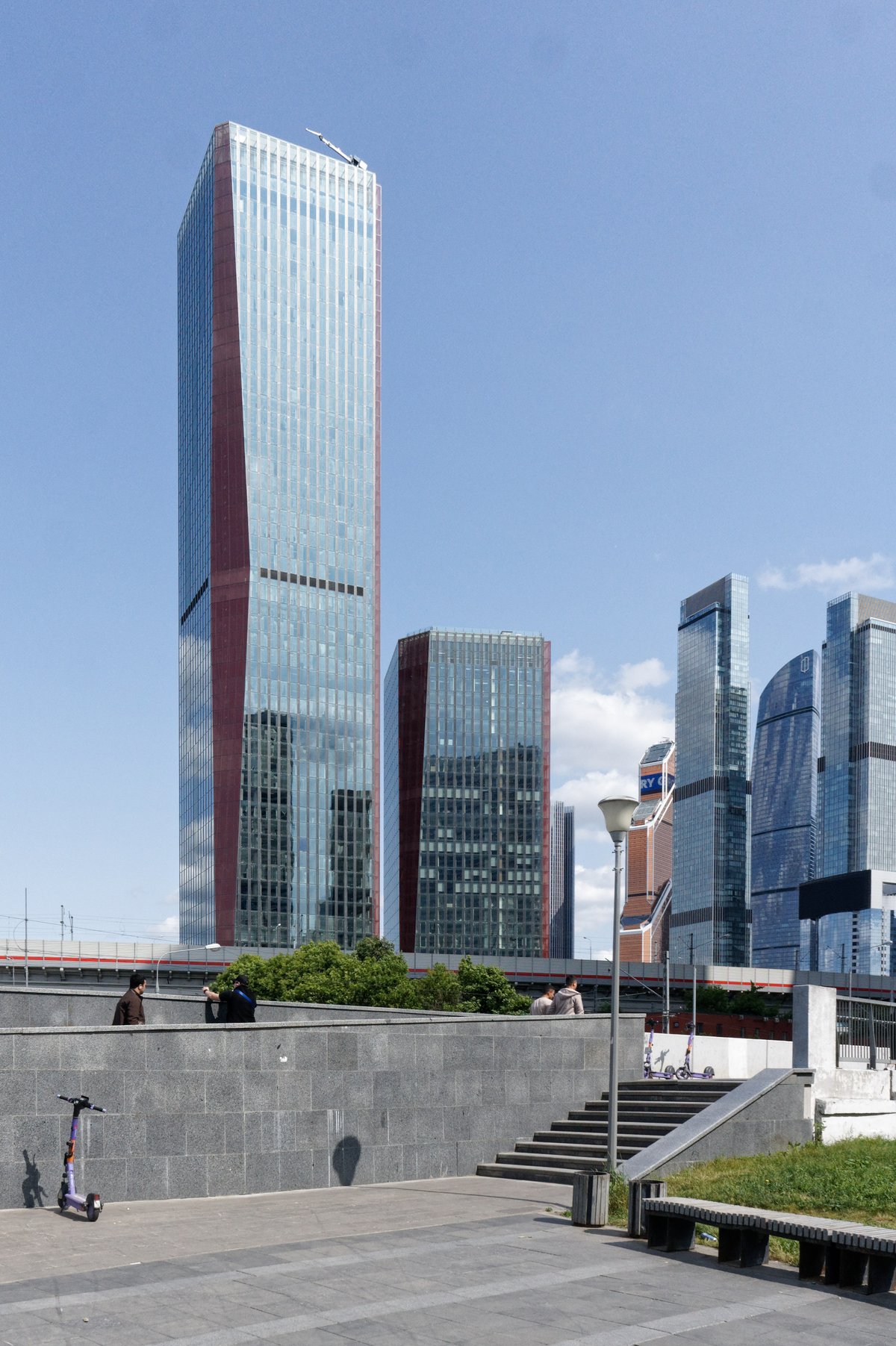
Shelepikha Moscow: Visiting Hours, Tickets, and Comprehensive Tourist Guide
Date: 14/06/2025
Introduction: Shelepikha’s Unique Urban Tapestry
Nestled along the banks of the Moskva River, Shelepikha is a dynamic Moscow district where centuries-old history and contemporary city life converge. Once a modest riverside village, Shelepikha has transformed through waves of industrialization, Soviet urban planning, and modern revitalization. Today, it stands as a vibrant blend of historic manor houses, repurposed industrial spaces, and gleaming skyscrapers—most notably as a gateway to the Moscow International Business Center (Moscow City). Visitors to Shelepikha can expect panoramic city views, scenic embankments, creative spaces, and easy accessibility via the state-of-the-art Shelepikha metro station. (Chalmers Research; E3S Web of Conferences)
Whether you’re a history buff, architecture enthusiast, or simply curious about Moscow’s urban evolution, this guide covers essential visiting hours, ticket details, transport, dining, and insider tips for an effortless and rewarding experience.
Table of Contents
- Introduction
- Shelepikha’s Historical Evolution
- Visiting Shelepikha: Attractions and Essential Information
- Shelepikha in Numbers
- Frequently Asked Questions (FAQ)
- Visual Media and Maps
- Related Articles
- Plan Your Visit
- Official Sources and Further Reading
Shelepikha’s Historical Evolution
From Riverside Village to City District
Shelepikha’s roots trace back to its days as a rural settlement, named from the Old Russian “shelep”—meaning “raft”—reflecting its importance in timber rafting and river trade. By the 18th and early 19th centuries, the area served as a gateway for goods and travelers entering Moscow, remaining largely agrarian until the arrival of the Moscow-Brest railway in the late 1800s, which spurred urban development (Chalmers Research).
Soviet Industrialization and Urban Planning
The Soviet period marked a dramatic transformation. Under the 1935 General Plan, Shelepikha became an industrial hub, home to factories, warehouses, and mass housing. Infrastructure improvements, including new roads and bridges, firmly integrated the district into Moscow’s expanding urban fabric (Chalmers Research).
Post-Soviet Transformation
Following the Soviet Union’s collapse, Shelepikha experienced factory closures, underinvestment, and fragmented development. Brownfield sites and informal economies characterized the area throughout the 1990s, leading to a mix of new commercial spaces and decaying industrial remnants (Chalmers Research).
21st-Century Revitalization
Shelepikha’s recent renaissance is closely linked to the development of the Moscow City business district and the 2018 opening of the Shelepikha metro station (Shelepikha Metro Station). Investment has brought mixed-use complexes, revitalized green spaces, and modern amenities, repositioning Shelepikha as one of Moscow’s most forward-looking neighborhoods (MyGlobalViewpoint).
Visiting Shelepikha: Attractions and Essential Information
Main Sights and Experiences
- Moscow City Skyscrapers: Adjacent to Shelepikha, this business district features world-class skyscrapers, with observation decks offering panoramic city views, shopping, and dining (Moscow City).
- Shelepikhinskaya Embankment: Riverside promenades with contemporary public art and scenic views of the Moscow skyline.
- Industrial Heritage Sites: Repurposed factories now host vibrant galleries, cafes, and creative spaces.
- Historic Manor Houses: Explore 18th-century estates within the district, reflecting Moscow’s architectural heritage (E3S Web of Conferences).
Visiting Hours and Ticketing
- Public Spaces: Embankments and parks are open 24/7, year-round.
- Observation Decks: Generally open 10:00 AM – 10:00 PM; tickets 500–1500 RUB, with discounts available.
- Galleries and Cafes: Hours vary, typically 10:00 AM – 8:00 PM; check individual venues for details.
Guided Tours and Accessibility
- Guided Tours: English- and Russian-language tours of Shelepikha and Moscow City are widely available via local agencies and online platforms.
- Accessibility: Modern developments and metro stations feature ramps, elevators, and tactile signage. Most riverside promenades and new venues are wheelchair accessible.
Getting There and Getting Around
- Metro: Shelepikha station connects to the Moscow Central Circle and Bolshaya Koltsevaya Line, with direct links to city landmarks (Moscow Metro Map).
- River Transport: Seasonal river cruises offer unique views of Shelepikha and Moscow City (MyGlobalViewpoint).
- Cycling & Walking: Pedestrian-friendly paths and bike rentals (Velobike system) make for enjoyable exploration.
- Taxi/Ride-Sharing: Services like Yandex.Taxi and Citymobil are reliable, especially during late hours or when carrying luggage.
Where to Eat and Stay
- Dining: A diverse culinary scene includes Russian classics (borscht, pelmeni, blini), international options, and trendy cafes.
- Accommodation: Choose from luxury hotels, serviced apartments, and budget hostels nearby; early booking is recommended during major events (RussianAmericanBusiness.org).
Seasonal Highlights and Local Events
- Spring/Summer: Enjoy riverside activities and outdoor festivals.
- Winter: Snow-covered scenery and festive lights create a magical atmosphere (MakeMyTrip).
- Annual Festivals: Events such as the White Nights Festival and Moscow International Jazz Festival are easily accessible from Shelepikha.
Safety and Practical Insights
- Safety: Newly developed areas are safe, but standard urban caution is advised.
- Language: Russian prevails; English is common in tourist spots—translation apps are useful.
- Payments: RUB is the local currency; cards are widely accepted, but carry some cash.
- Connectivity: Free Wi-Fi is widespread; local SIM/eSIMs offer reliable internet.
- Weather: June averages 11–21°C; pack layered clothing and a waterproof jacket.
Shelepikha in Numbers
- Population: Over 120,000 residents (Presnensky District), with rapid growth.
- Transport: Shelepikha metro station serves thousands daily, supporting its status as a major transit hub (Moscow Metro Statistics).
- Development: Ongoing residential, commercial, and green infrastructure projects.
Frequently Asked Questions (FAQ)
Q: What are Shelepikha’s main attractions?
A: Moscow City skyscrapers, Shelepikhinskaya Embankment, repurposed industrial spaces, and historic manor houses.
Q: Are there entry fees?
A: Public spaces are free; observation decks and some cultural venues charge admission.
Q: How do I get to Shelepikha?
A: Via Shelepikha metro station (Central Circle & Bolshaya Koltsevaya Line).
Q: Is Shelepikha accessible?
A: Yes, most new developments are designed for accessibility.
Q: When is the best time to visit?
A: Late spring through early autumn for outdoor activities; winter for festive charm.
Visual Media and Maps
- Interactive maps: Moscow Metro website
- Virtual tours of Moscow City and Shelepikha landmarks
- Suggested visuals: Embankment, metro station, city skyline, historical sites
Related Articles
Plan Your Visit
Ready to explore Shelepikha’s blend of heritage and modernity? Download the Audiala app for offline maps and audio guides. For the latest events and tips, follow us on social media and consult official tourism platforms.
Official Sources and Further Reading
- Chalmers Research Report
- Shelepikha Metro Station (Wikipedia)
- E3S Web of Conferences
- Moscow Metro Official Map
- RussianAmericanBusiness.org
- MyGlobalViewpoint – Most Beautiful Places in Moscow
- Moscow’s Master Plan 2025 (Scribd)
